Elatine Hydropiper, also known as Waterwort or Marshwort, is a remarkable aquatic plant that thrives in various aquatic environments.
In this article, we will explore the wonders of Elatine Hydropiper, its habitat and taxonomy, care requirements for freshwater aquariums, ecological impact on biodiversity, and plant identification and preservation strategies.
By the end of this article, you will gain a deeper understanding of its significance in aquatic environments.

Elatine Hydropiper is a versatile aquatic plant that captures attention due to its unique physical attributes and important role in freshwater ecosystems.
Whether you are a hobbyist, a botanist, or simply curious about aquatic plant life, exploring the wonders of Elatine Hydropiper will broaden your knowledge and deepen your appreciation for the natural world.
Key Takeaways
- Elatine Hydropiper is a versatile aquatic plant that thrives in various aquatic environments.
- Understanding Elatine Hydropiper’s habitat and taxonomy contributes to its successful cultivation and preservation.
- Elatine Hydropiper is a popular choice for freshwater aquarium plants due to its compact size and aesthetic appeal.
- The plant plays a significant role in ecosystem biodiversity by serving as a habitat and providing food sources for aquatic fauna.
- Proper plant identification and preservation strategies are crucial for the conservation of Elatine Hydropiper and other endangered aquatic plants.
What Is Elatine Hydropiper?
Elatine Hydropiper, scientifically known as Elatine hydropiper, is a small aquatic herbaceous plant that belongs to the family Elatinaceae. It is commonly referred to as Waterwort or Marshwort.
Thin stems, small leaves, and a unique growth habit characterize this delicate plant. Elatine Hydropiper is native to Europe, Northern Africa, and Western Asia and is primarily found in freshwater habitats such as marshes, slow-moving streams, and ponds.
It thrives in shallow water with muddy or sandy substrates. Despite its inconspicuous appearance, Elatine Hydropiper is a botanical wonder that plays a significant role in aquatic ecosystems.
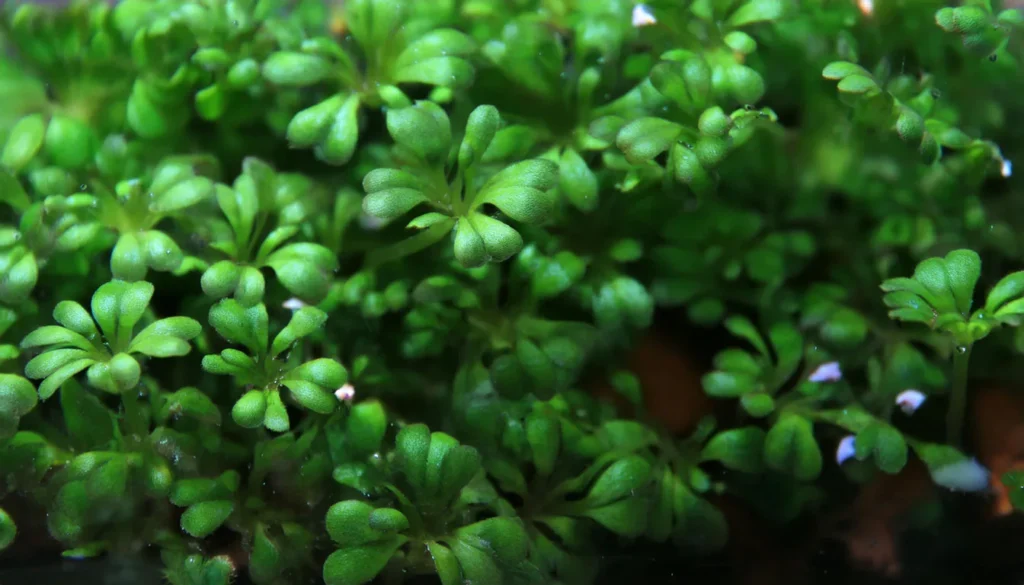
Exploring The Habitat Of This Wetland Species
Elatine Hydropiper, a wetland species, is well adapted to various freshwater habitats, particularly wetland areas such as marshes, ponds, and slow-moving streams. It thrives in areas with shallow water and muddy or sandy substrates.
This resilient plant has developed the ability to withstand flooding and drought, making it a versatile species in aquatic environments.
Elatine Hydropiper plays a crucial role in wetland ecosystems by providing important shelter and habitat for various aquatic organisms. Its presence contributes to the overall biodiversity of wetlands, supporting the intricate web of life that depends on these habitats.
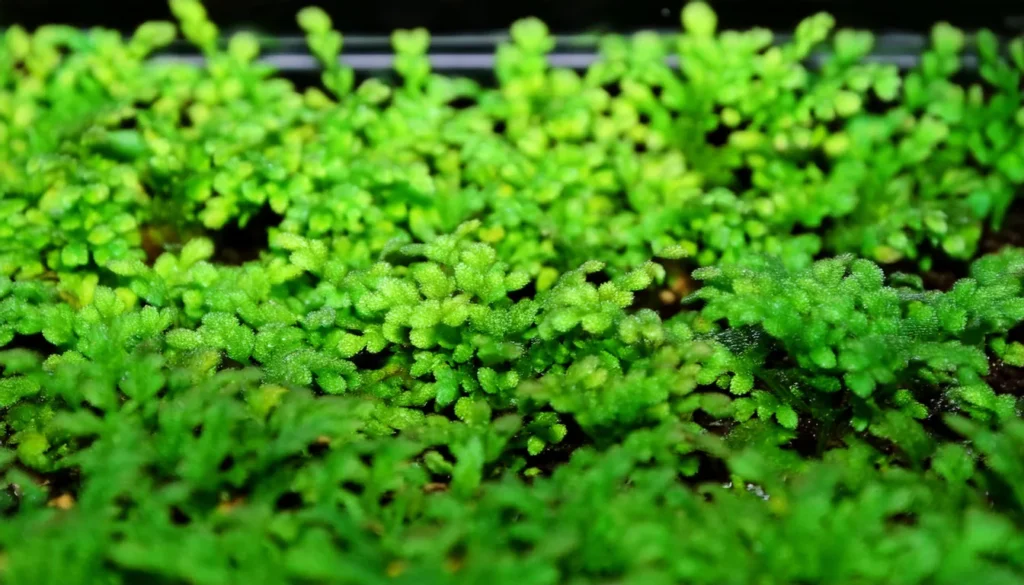
Physical Characteristics
- Elatine Hydropiper, an aquatic plant of the wetland species, possesses unique physical attributes that distinguish it from other plants in its habitat. This small plant typically grows to 5-20 centimeters and showcases thin and delicate stems.
- The leaves of Elatine Hydropiper are small and narrow, measuring around 1-2 centimeters in length and 1-3 millimeters in width. They feature a lanceolate shape and a glossy, bright green color, adding to the plant’s aesthetic appeal.
- Elatine Hydropiper produces tiny flowers with delicate white, pale pink, or purple petals, further enhancing its beauty and allure.
- After pollination, Elatine Hydropiper develops small round fruits known as capsules. These capsules contain numerous tiny seeds crucial for the plant’s reproduction.
- The ability to produce abundant seeds ensures the propagation and survival of Elatine Hydropiper. Understanding the physical attributes of this remarkable aquatic plant is essential for accurate identification and successful cultivation.
Lighting Requirements For Optimal Growth
- Light is crucial for the optimal growth of Elatine Hydropiper. Providing sufficient intensity and duration of light is essential to support photosynthesis. The plant requires moderate to high levels of light to thrive.
- Aquarium lights specifically designed for aquatic plant growth are recommended. These lights should provide a spectrum that promotes photosynthesis and encourages healthy and vibrant growth.
Temperature Parameter For Optimal Growth
- Echinodorus ‘Helanthium’ tenellus, or Pygmy Chain Sword, flourishes in water temperatures ranging from 22°C to 28°C (72°F to 82°F), closely resembling its natural tropical habitat conditions.
- Sustaining stable temperatures within this range is pivotal, ensuring optimal conditions for vigorous growth, leaf development, and overall plant vitality within the aquarium setup.

Suitable Water Conditions
- Temperature: Keep water temperature between 22°C to 28°C (72°F to 82°F) to mimic its native tropical habitat.
- pH Level: Maintain a slightly acidic to neutral pH range of 6.5 to 7.5.
- Water Hardness (GH/KH): Provide moderate to slightly hard water with a general hardness (GH) and carbonate hardness (KH) between 4 to 8 dGH.
- Nutrient Levels: Ensure adequate levels of nutrients, particularly nitrogen and phosphorus, for healthy growth.
- Lighting: Provide moderate to high-intensity lighting suitable for aquatic plants, as Echinodorus ‘Helanthium’ tenellus requires sufficient light for photosynthesis and growth.
- CO2: While not essential, supplemental CO2 can promote faster and more robust growth, especially in high-tech planted aquarium setups.
Soil And Substrate Preferences
- Elaine Hydropiper has specific preferences regarding soil and substrate. It favors moist and fertile soils with good organic content. The substrate should be well-drained and provide a stable foundation for the plant’s roots.
- A nutrient-rich substrate, such as aquarium soil or a blend of aquatic plant substrates, can promote healthy growth and development. It is important to select a substrate that is appropriate for aquatic plants and remains stable in an underwater environment.
Placement Option In The Tank
- Foreground Planting: Ideal for creating a lush carpet effect, plant it in the foreground to accentuate the tank’s depth.
- Midground Accent: Use it as a midground accent to add texture and interest to the aquarium’s middle section.
- Under Hardscape Features: Plant around hardscape elements like rocks or driftwood to soften their appearance and create a natural transition.
- In Habitat Zones: Consider its native habitat and place it in areas with moderate to high lighting and nutrient availability.
- Open Spaces: Leave open spaces between plants to allow for growth and prevent overcrowding, fostering a natural look.
- Along Tank Borders: Line the borders of the aquarium with Pygmy Chain Sword to frame the tank and create a cohesive look.

Recommended Tank Size
Nano Tanks: Suitable for nano or small aquariums with a capacity of 5 to 10 gallons, allowing for a compact foreground carpet effect.
Small to Medium Tanks: Ideal for small to medium-sized tanks ranging from 10 to 50 gallons, providing ample space for planting and growth.
Large Tanks: Suitable for larger aquariums exceeding 50 gallons, allowing for extensive planting and creating a lush carpet across the foreground.
Suitable Tank Mates
- Small Fish: Species like tetras, rasboras, danios, and small corydoras catfish are compatible and won’t disturb the plants.
- Shrimp: Peaceful shrimp species like cherry shrimp or amano shrimp can coexist and help keep the tank clean.
- Snails: Snails such as nerite snails or Malaysian trumpet snails are beneficial for algae control and won’t harm the plants.
- Bottom Dwellers: Small bottom-dwelling fish like otocinclus catfish or dwarf plecos can complement the plants without causing damage.
Nutritional Needs Of The Plant
Echinodorus ‘Helanthium’ tenellus (Pygmy Chain Sword) thrives when provided with a comprehensive array of nutrients, encompassing both macro and micronutrients essential for its growth and development.
Macro Nutrients
- Nitrogen (N): As a fundamental component of chlorophyll molecules, nitrogen plays a pivotal role in photosynthesis and protein synthesis. Adequate nitrogen availability fosters robust vegetative growth, lush foliage, and overall plant vigor.
- Phosphorus (P): Critical for energy transfer processes within the plant, phosphorus is integral to ATP synthesis, facilitating nutrient uptake, root development, and metabolic activities. Furthermore, phosphorus supports flowering and fruiting, enhancing the reproductive capacity of the plant.
- Potassium (K): Functioning as an essential electrolyte, potassium regulates osmotic balance, stomatal opening, and enzyme activation. It aids in water and nutrient transport, enhances stress tolerance, and promotes overall plant resilience against environmental fluctuations.
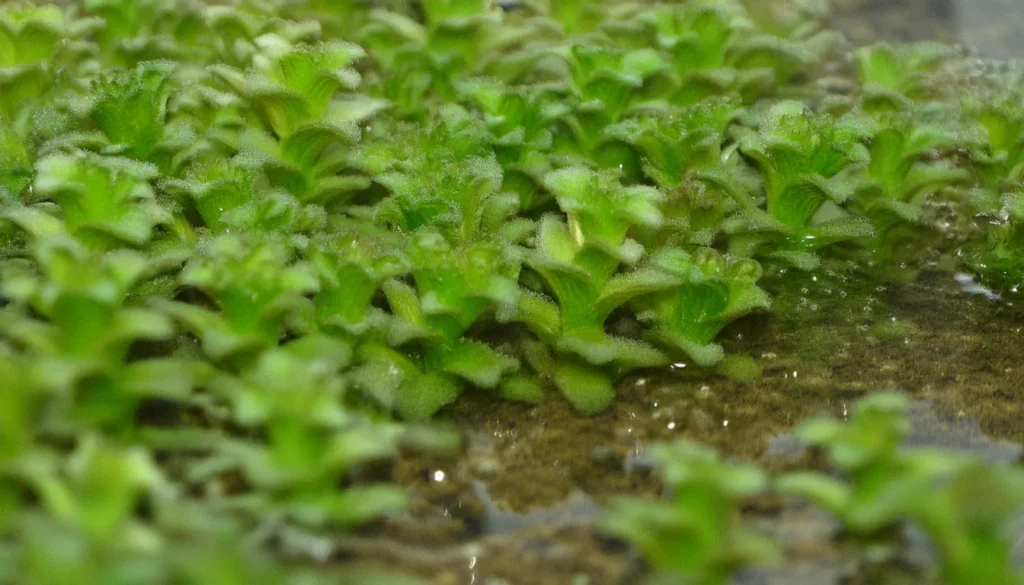
Micro Nutrients
- Iron (Fe): An indispensable micronutrient, iron serves as a co-factor for numerous enzymes involved in chlorophyll synthesis, electron transport, and nitrogen metabolism. Iron deficiency manifests as chlorosis, hindering photosynthetic efficiency and stunting growth.
- Magnesium (Mg): Acting as the central atom in the chlorophyll molecule, magnesium is indispensable for photosynthesis, facilitating light absorption and carbon fixation. Additionally, magnesium participates in enzyme activation and nucleic acid synthesis, supporting overall plant growth and development.
- Calcium (Ca): Beyond its structural role in cell walls, calcium regulates cellular signaling, enzyme activation, and membrane integrity. Adequate calcium levels mitigate the risk of tissue necrosis, improve cell division, and enhance nutrient uptake efficiency.
Cultivation Tips
- Lighting: Provide moderate to high-intensity lighting, mimicking its native habitat. Aim for 8 to 10 hours of light per day to support photosynthesis and healthy growth.
- Substrate: Use a nutrient-rich substrate or add root tabs to provide essential nutrients for root development and growth. Ensure the substrate is well-aerated to prevent anaerobic conditions.
- Water Parameters: Maintain stable water parameters within the recommended range: temperature 22°C to 28°C (72°F to 82°F), pH 6.5 to 7.5, and moderate water hardness (4 to 8 dGH).
- Nutrient Supplementation: Supplement with liquid fertilizers or root tabs to ensure an adequate supply of macro and micronutrients. Monitor nutrient levels regularly and adjust supplementation as needed.
- CO2: While not essential, supplemental CO2 can promote faster and more robust growth, especially in high-tech planted aquarium setups. Consider CO2 injection for optimal results.
- Pruning and Maintenance: Regularly prune any dead or decaying leaves to maintain plant health and prevent nutrient depletion. Monitor for algae growth and address any issues promptly.
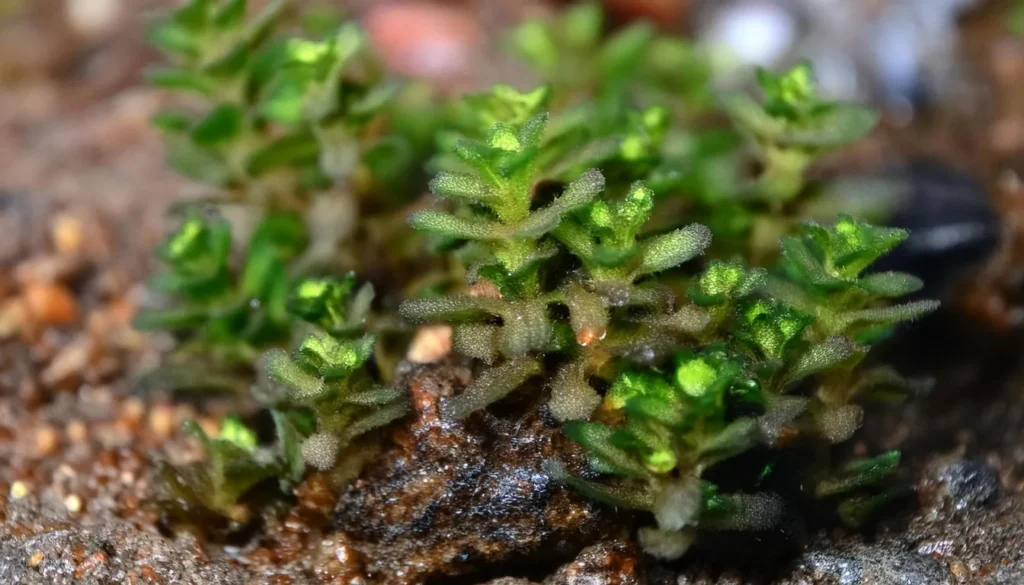
Plant Propagation Tips
- Runners: Pygmy Chain Sword propagates by sending out runners, producing new plantlets along them. Allow these runners to grow and develop plantlets. Once the plantlets have developed roots, you can separate them from the parent plant and replant them elsewhere in the aquarium.
- Division: If the plant has formed dense clumps, you can divide it into smaller portions. Carefully separate the clumps into individual sections, ensuring that each section has a sufficient number of leaves and roots. Replant these sections in the substrate, spacing them appropriately to allow for growth.
- Stem Cuttings: While Pygmy Chain Sword primarily propagates through runners and division, you can also propagate it using stem cuttings. Trim healthy stems from the plant, ensuring each cutting has several leaves attached. Plant these stem cuttings in the substrate, burying them to a sufficient depth to promote root development.
- Encouraging Growth: To encourage propagation, provide optimal growing conditions, including adequate lighting, nutrient-rich substrate, and stable water parameters. Supplement with liquid fertilizers or root tabs to ensure the availability of essential nutrients. Regularly monitor the plant for new growth and adjust care as needed.
Benefits Of Planting Elatine Hydropiper
- Oxygenation: Like many aquatic plants, Elatine hydropiper contributes to oxygenating the water through photosynthesis, enhancing the overall health of aquatic inhabitants.
- Water Filtration: Its dense growth helps filter the water by absorbing excess nutrients, pollutants, and organic waste, thereby improving water quality and reducing the risk of algae blooms.
- Natural Habitat Simulation: Creating a naturalistic aquatic environment, Elatine hydropiper provides shelter, breeding grounds, and foraging areas for small fish, shrimp, and other aquatic organisms, promoting their well-being and natural behaviors.
- Aquascape Aesthetics: Its lush, carpet-like growth adds visual appeal to the aquarium, creating a vibrant and naturalistic foreground or midground. This can enhance the overall aesthetics of the aquascape, creating a more appealing and dynamic underwater landscape.
- Erosion Control: Elatine hydropiper’s root system helps anchor substrate, reducing the risk of erosion in the aquarium. This is particularly beneficial in setups with gentle slopes or areas prone to substrate displacement.
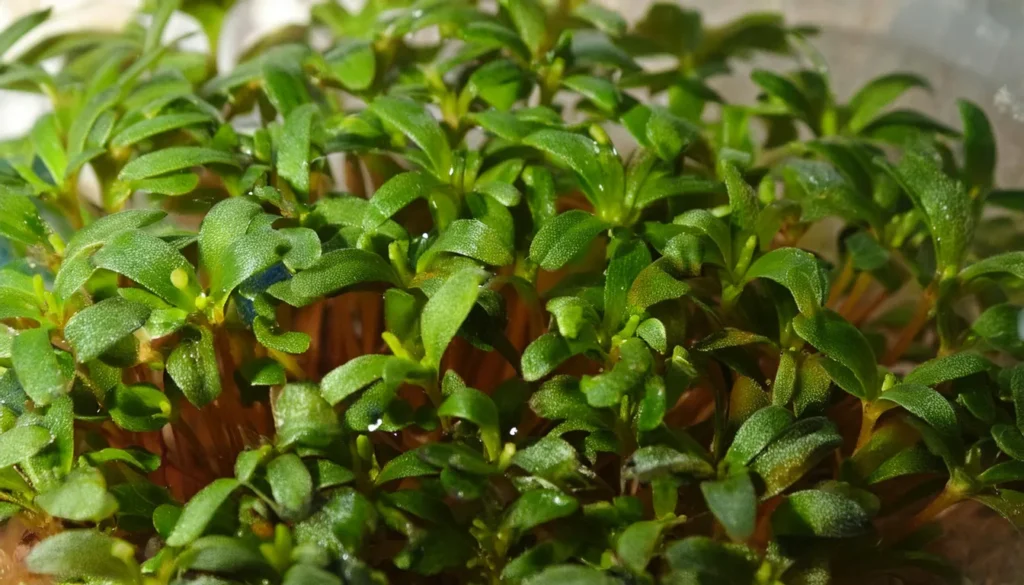
Conclusion
Elatine Hydropiper is an intriguing aquatic plant that captivates enthusiasts and plays a crucial role in freshwater ecosystems. Its unique physical attributes, ecological impact, and specific care requirements make it a remarkable plant to study and cultivate.
By understanding the wonders of Elatine Hydropiper, we can appreciate the importance of conserving and preserving the biodiversity of our aquatic environments.
Through proper care, identification, and conservation efforts, we can ensure the long-term survival of this botanical wonder and continue to enjoy its beauty and ecological significance.
Elatine Hydropiper’s delicate balance with its surroundings highlights the interconnectedness of all organisms in our natural world.
Protecting and nurturing this aquatic plant benefits the plant itself and the countless species that depend on its presence for shelter and sustenance.
As we delve deeper into the mysteries of Elatine Hydropiper, we unveil a world teeming with fascinating interdependencies and intricate ecosystems.
We are responsible for acting as stewards of the environment and striving to preserve species like Elatine Hydropiper. Working together can ensure a thriving and diverse aquatic ecosystem for future generations to appreciate and explore.
Frequently Asked Question
What Is The Plant Taxonomy Of Elatine Hydropiper?
Elatine Hydropiper is a member of the genus Elatine, which is part of the family Elatinaceae and comprises several other aquatic plants.
What Are The Challenges Faced By Elatine Hydropiper?
Elatine Hydropiper faces challenges from invasive species and environmental stressors such as pollution and climate change, which can impact its growth and survival.
How Does Elatine Hydropiper Contribute To Biodiversity?
Elatine Hydropiper serves as a habitat for aquatic fauna and influence interactions within food webs, thus contributing to the overall biodiversity of freshwater ecosystems.
How Can Elatine Hydropiper Be Identified In The Wild?
Recognizing Elatine Hydropiper in the wild requires understanding its physical characteristics and habitat preferences.
What Efforts Are Being Made To Conserve Elatine Hydropiper?
Conservation efforts include establishing protected areas and implementing measures to reduce habitat loss and degradation to preserve endangered aquatics like Elatine Hydropiper.
- Unveiling The Wonders Of Riccia Fluitans In Aquascapes - August 7, 2024
- Vallisneria Gigantea Var. Guide To Care And Cultivation At Home - July 31, 2024
- Vesicularia Dubyana Care & Growth Guide Tips For Beginner Gardeners - July 30, 2024
